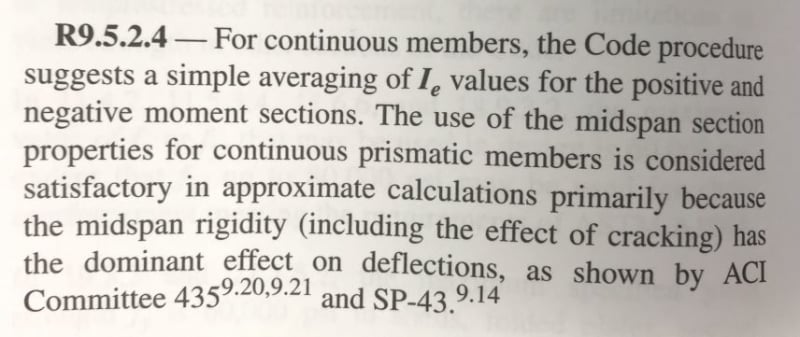When calculating the deflection of a simply supported concrete beam with a uniform load on it, I normally calculate the effective inertia as a result of the maximum moment as per the (Canadian) Concrete Design Handbook. I started to think about it though, does this assume that the effective inertia applies along the full length of the beam? Would it be possible/correct to discretize the beam into shorter sections and compute the deflection cumulatively (going back to my structural analysis notes from University), or create a series of beams in a computer model with varying inertias? I'm fine taking the approach of effective inertia at max moment, but occasionally I need to check an existing beam or sharpen my pencil to get things to work, so it would be good to know if there are other options out there.
Thanks.
Thanks.

